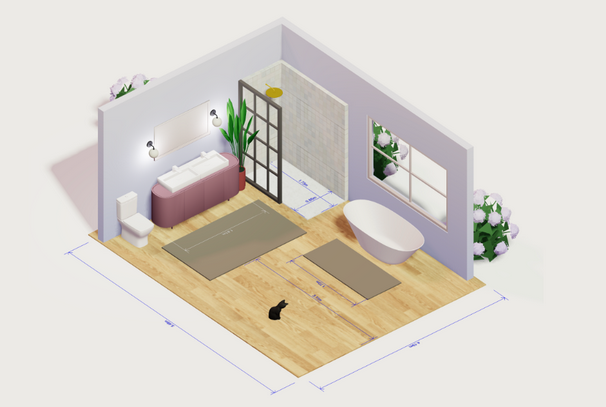- Home
- Articles
- Architectural Portfolio
- Architectral Presentation
- Inspirational Stories
- Architecture News
- Visualization
- BIM Industry
- Facade Design
- Parametric Design
- Career
- Landscape Architecture
- Construction
- Artificial Intelligence
- Sketching
- Design Softwares
- Diagrams
- Writing
- Architectural Tips
- Sustainability
- Courses
- Concept
- Technology
- History & Heritage
- Future of Architecture
- Guides & How-To
- Art & Culture
- Projects
- Interior Design
- Competitions
- Jobs
- Store
- Tools
- More
- Home
- Articles
- Architectural Portfolio
- Architectral Presentation
- Inspirational Stories
- Architecture News
- Visualization
- BIM Industry
- Facade Design
- Parametric Design
- Career
- Landscape Architecture
- Construction
- Artificial Intelligence
- Sketching
- Design Softwares
- Diagrams
- Writing
- Architectural Tips
- Sustainability
- Courses
- Concept
- Technology
- History & Heritage
- Future of Architecture
- Guides & How-To
- Art & Culture
- Projects
- Interior Design
- Competitions
- Jobs
- Store
- Tools
- More
Architectural Design Software Tools for Student Design

Many architecture students want fast ways to explore ideas. Some of them even rely on WritePaperForMe to make time for design work. Over the last decade, digital tools in architecture have grown in variety and power. By using architectural design software, these students can sketch 3D buildings, test materials, and create lifelike scenes in less time. High-end programs make it simpler to show large projects without building elaborate physical models. Professors also notice how younger designers dive right into virtual settings, exploring new forms with laser-sharp accuracy.
The question is whether this trend changes how learners solve design challenges. Before advanced software, students sketched on paper. They cut cardboard shapes and manually tested their structures. Now, they toggle between tools and experiment with shapes that might be too detailed to craft by hand. This shift speeds up design, but does it reduce creative thinking? Or does it open more possibilities? Each approach has pros and cons, yet the digital path is becoming the main choice for up-and-coming architects.
Table of Contents
ToggleThe Rise of Architectural Visualization Software
Modern classes in design programs often highlight architectural visualization software. This technology helps students turn rough sketches into vivid images that look almost real. They can adjust lighting, add textures, and place lifelike figures to give scale to their concepts. In many cases, teachers see better engagement because students quickly grasp spatial layouts through dynamic 3D views.

In the past, novices had to learn hand-drawing styles to show depth and mood. Now, these software tools handle complex shading and perspective. This frees learners to explore radical ideas without worrying too much about manual skill. At the same time, it can tempt them to rely on presets, which might limit creative variety. That is where mindful guidance becomes important.
Because new technology in architecture changes so quickly, many instructors now include software tutorials in their lessons. Some even point students to online architecture courses where they can polish digital skills further. These resources make design more accessible, but they also raise concerns about originality. The balance is still in progress.
Architectural Design Software and Its Impact on Creativity
Architectural design software has become a core part of many studio classes. These programs let students rotate models, layer details, and even run basic simulations. By clicking through toolbars, they can test how a building might stand under different loads. This new approach saves time and allows for deeper exploration of shapes and solutions.
Yet, some critics argue that this streamlined path can dull imagination. When every line is clean and each corner snaps into place, the rough charm of hand sketches is lost. In a traditional setting, a smudge or uneven angle might spark new ideas. With software, everything seems perfect right away, possibly limiting those happy accidents that lead to fresh perspectives.
On the other hand, digital features can spark creativity by exposing students to new forms. Tools like parametric modeling encourage them to generate designs that shift and adapt with a few clicks. This helps them see options and push boundaries. The key is finding a middle ground where the tool aids ingenuity rather than replacing it.
Blending Hand Drafting with Digital Sketching
Hand drafting may seem old-fashioned, yet many instructors still promote it as a strong foundation. By sketching with pencils and pens, students learn how to feel space and interpret details. Each pencil stroke feels more personal, revealing where lines might need extra thought. This kind of slow process fosters a mindset that explores both flaws and potential strengths.
Yet, digital sketching is becoming more common in class. Some students use tablets and styluses to replicate the hand-draft experience. Others prefer to jump straight into architectural visualization software to map out their visions. This mix helps them become well-rounded, shifting between analog and digital modes as needed.
When learners merge these approaches, they gain a better sense of proportion and scale. They can draft quick ideas on paper, then refine them with architectural design software. It keeps them connected to the tactile side of design while harnessing the speed of modern tools. Instructors often see an improvement in understanding basic principles when both methods are taught together.
Online Architecture Courses: Expanding Learning Beyond the Classroom
Online architecture courses have become popular for students who want flexible learning. Many platforms offer modules on architectural design software, letting learners practice at their own pace. This shift to virtual study is partly thanks to new technology in architecture, which has made remote teaching tools more robust. From live demos to recorded tutorials, these classes simplify the process of mastering complex software commands.
Some students find it easier to learn complicated tools if they can pause and replay lessons. Others appreciate the chance to review segments on structural analysis or lighting design whenever they want. This type of learning can help them manage busy schedules, especially if they juggle internships or other obligations. It also allows them to study unique topics that might not be covered in a local program.
However, online architecture courses lack face-to-face feedback from professors. Students might miss spontaneous questions or side discussions that happen in a physical studio. Balancing online modules with in-person critiques can create a well-rounded path. Instructors often recommend these blended methods for the best outcomes.
3D Printing and Rapid Prototyping
3D printing is one example of new technology in architecture that has changed how students test physical models. By sending a digital file to a printer, they can see their virtual designs take shape in real life. This process helps them spot potential errors that are not always clear on a computer screen. It also allows them to refine dimensions, weight, and balance in a tangible way.
Rapid prototyping goes with this idea. Students can generate multiple versions of a design and compare them side by side. With architectural visualization software, they might see how a structure looks under different lights or angles. By printing these forms, they can also feel how size and shape work together. This deepens their understanding of function and form.
Physical prototypes create a bridge between the hands-on world and the screen. Those who might rely heavily on architectural design software can benefit from seeing how their ideas hold up in three dimensions. The combination of digital modeling and tangible output is now a standard in many studios.
Collaboration in Virtual Studios
Collaboration is part of any design field, and virtual studios expand that idea. Thanks to architectural visualization software, teaming up on group tasks has never been simpler. Students can share their 3D models and co-edit them in real time. Some platforms even let them leave comments on specific parts of a model. This means they do not have to wait for a class meeting to suggest improvements or ask questions.
Online architecture courses also support these interactions by offering discussion boards and live sessions. When students gather online, they exchange files and critique each other’s concepts. This reflects real-world practices, where team members often work from different locations. By experiencing remote collaboration in school, they sharpen skills for a future where cross-border projects are becoming standard.
Still, this approach can feel impersonal. Body language and impromptu brainstorming sometimes get lost in digital spaces. Professors encourage students to blend live meetings with online tools. That way, they preserve the spontaneity of face-to-face teamwork while reaping the benefits of modern platforms.

Adapting Teaching Methods for Digital Natives
In many schools, professors are adjusting lessons to suit digital natives who grew up with tech. These instructors recognize that students feel at home with computers and tablets. They often tailor projects around architectural design software to keep learners engaged. By the same token, they remind their classes that software is just a tool. Understanding core design principles is still key when creating functional and beautiful spaces.
Some educators worry that younger students might skip the fundamentals. They see a generation that can produce impressive visuals but might not grasp the physics behind them. To address this, teachers combine digital tasks with theory-based lectures. They push students to test the logic of their designs, not just the look. This ensures that the final outcome meets structural and practical needs.
Critics also point out that frequent updates to technology can overwhelm newcomers. Once they master one software, a new version emerges with added features. So, flexibility and a willingness to learn are vital traits. Professors guide students to adapt, ensuring they remain open to evolving tools.
The Future of Student Design in an Evolving Landscape
Architecture education is unfolding in a world where digital tools are standard. Students, armed with architectural visualization software, can present jaw-dropping designs and collaborate in ways that would have been impossible decades ago. As a result, the student approach to design is shifting toward speed, precision, and global collaboration. Yet, there is still an ongoing debate about how best to preserve creativity.
Some predict that online architecture courses will keep growing, providing more access to specialized topics. Others foresee further integration of emerging tech like virtual reality or augmented reality in design classes. These tools could help students walk through digital rooms and adjust layouts in real time. Meanwhile, instructors stress the importance of core principles that remain the backbone of any successful building.
Ultimately, the blend of old and new will shape modern design education. Hand sketches might never vanish entirely, nor should they. By striking a balance between tactile methods and advanced software, the next generation of architects can craft solutions that are both beautiful and lasting.
illustrarch is your daily dose of architecture. Leading community designed for all lovers of illustration and #drawing.
Submit your architectural projects
Follow these steps for submission your project. Submission FormLatest Posts
Best Architectural Software for Students in 2025
In 2025, digital tools aren’t just convenient — they’re essential to learning,...
Beginner’s Guide to Arcadium 3D: Your First Room Design in 5 Easy Steps
Designing a room used to mean wrestling with tape measures, mood boards,...
Lumion 2024.3: It’s Time to Enhance Urban Visualization
With 5x faster video rendering, a remarkable improvement in material quality, and...
Lumion Pro 2025: Smarter, Faster, More Realistic
In today’s architectural world, rendering plays an important role in turning design...












Leave a comment